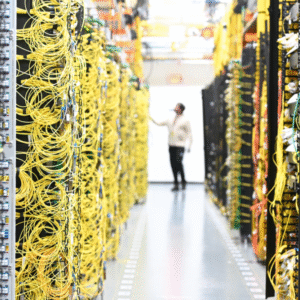Technology is evolving faster than ever, reshaping the way we interact with the world. One recent breakthrough is drawing both fascination and concern—AI-powered location detection from indoor photos. This innovation, powered by artificial intelligence and machine learning, can now guess your location just by analyzing a picture taken inside a building.
At first, it sounds like something from a sci-fi movie. But as this tool becomes more advanced, many are beginning to wonder—should we be worried about how this tech might affect our privacy?
How Does AI Detect Locations from Indoor Photos?
Artificial intelligence has made incredible progress in understanding images. One of the most advanced applications is its ability to determine the location of an indoor photo. Unlike GPS-based tracking, this method doesn’t require any metadata or geotags. Instead, it relies solely on what’s visible in the image.
So how does it work?
AI systems are trained using millions of geotagged images from across the globe. These images are labeled with exact location data. By analyzing these pictures, the AI learns patterns—such as furniture types, lighting styles, flooring materials, and architectural elements unique to different regions.
When you upload a new photo, the system compares its visual features to its massive database. In a matter of seconds, it can narrow down the likely location—even to a specific street or building.
📌 For instance, a traditional Japanese sliding door, Mediterranean tiles, or a New York loft-style interior could hint at regional origins.
While this might be impressive from a technological perspective, it’s also a potential privacy minefield.
The Technology Behind the Scenes
The secret to this capability lies in a mix of deep learning, image recognition, and spatial analysis. Once an image is uploaded, it is broken down into components—colors, shapes, shadows, object types, and even materials. Then, the AI cross-references these features with images stored in its training set.
Some researchers claim that AI-powered location detection from indoor photos can sometimes even detect the building name based on unique visual cues, especially in densely photographed areas like big cities.

But it’s not always accurate. Poor lighting, blurred images, or generic room layouts can lead to false guesses. Still, the high success rate in many cases makes it a powerful—if controversial—tool.
Privacy Concerns in the AI Era
As AI becomes more capable, it’s also becoming more intrusive. The most obvious concern with this technology is privacy. Many people assume that an indoor photo shared on social media is safe from location tracking—but not anymore.
🎯 A simple selfie in your living room might give away your city, neighborhood, or even exact home location without you realizing it.
Imagine if a bad actor used this information to stalk, scam, or target you. Or what if companies used it to profile consumers? Even governments could exploit it in the name of surveillance. That’s why many experts believe this is a wake-up call for digital safety.
Several privacy groups and security researchers are now demanding clear guidelines and restrictions on such technologies to protect the average user.
For more on AI and privacy:
🔗 Electronic Frontier Foundation – AI Surveillance
🔗 Mozilla Foundation – Protecting Privacy
The Future of AI and Location Detection
This innovation could be used for good. For example:
- Real estate agencies could use it to identify where a property is located based on just interior photos.
- Law enforcement might solve missing person cases or locate illegal activities using photo evidence.
- E-commerce companies might send region-specific ads based on your home’s look.
But with such possibilities come ethical questions. Should people have to consent before their photo is used this way? Can the technology be regulated? And what rights do we have over our own visual environment?
If left unchecked, AI-powered location detection from indoor photos could set a dangerous precedent.
“With great power comes great responsibility” — and in this case, the responsibility lies with both tech developers and governments.
What Can You Do to Protect Yourself?
As a user, it’s important to take proactive steps to guard your privacy:
- Check privacy settings on apps and social media platforms.
- Avoid uploading indoor photos with clear, unique details or identifiable furniture.
- Use photo metadata removers before sharing images online.
- Stay informed about the latest AI trends that affect your digital life.
Also, ask yourself: Does this photo reveal more than I think?
Public awareness is just as important as technological regulation. The more people know about how these systems work, the better choices they can make.
Conclusion
The rise of AI-powered location detection from indoor photos is both a technical marvel and a privacy concern. While it offers exciting applications in areas like law enforcement, marketing, and real estate, it also poses real risks if misused.
As technology continues to grow, so must our efforts to protect personal data. Governments need to implement smart regulations, developers must build safer tools, and individuals must stay alert and informed.
Whether we embrace it or regulate it, one thing is clear: AI is here to stay, and how we handle it today will shape the digital world of tomorrow.










1 Comment